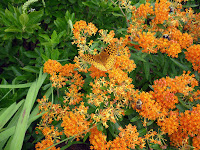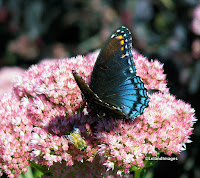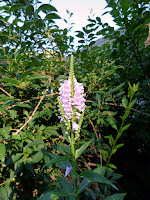 |
| Native Milkweed & pollinators |
educational events to the public on a regular basis. I attended the Native Plants and Pollinators Conference this week and learned so much about pollinators.
Most folks immediately think of bees when they hear the term "pollinator," but even though the bee-types make up the largest segment of the term–more than 70% of the world's plants depend on pollination by bees (The Bee-Friendly Garden, Frey & LeBuhn, 2016)–we also depend on butterflies and wasps, flies and hummingbirds to keep our plants and trees flourishing.
 |
| Stonecrop Sedum Feast |
My own gardens are 85% native plants that attract these important pollinators.
In her talk, "Asters & goldenrods: Autumn's Pollinator Banquet," Heather Holm described some of the most interesting traits of the Bumblebee (Bombus), which is a solitary bee. For instance, the first Bumblebees you see in the spring are the queens. They are large, and vigorously foraging on the earliest blooming flowers and trees as they prepare to make a nest.
 |
| Male Carpenter Bees on Zinnia |
When that group hatches, they are all males. Once they leave the nest, they never return. So when you
see a Bumblebee resting on a flower early in the cool morning or in the evening, it is a male.
 |
| Bumblebee buzz-pollinating wild rose |
Bumblebees are the only pollinators that can "buzz pollinate," which means they can access the pollen from flowers that have no anthers by crawling into the throat of the flower, then vibrating to shake the pollen onto their bodies.
 |
| Hummingbirds love Obedient Plant |
Every small thing we each do could make a big difference in the future.

No comments:
Post a Comment